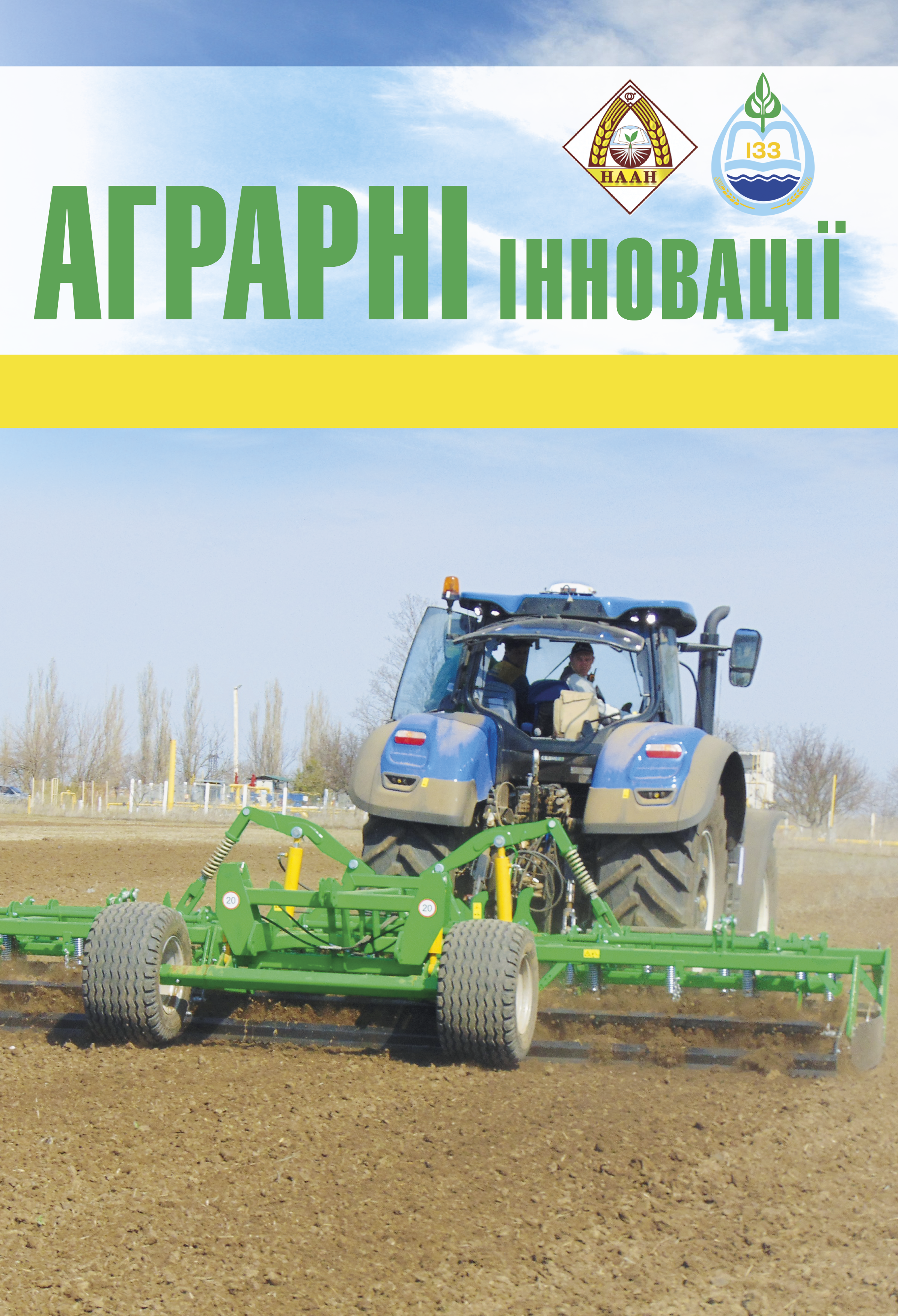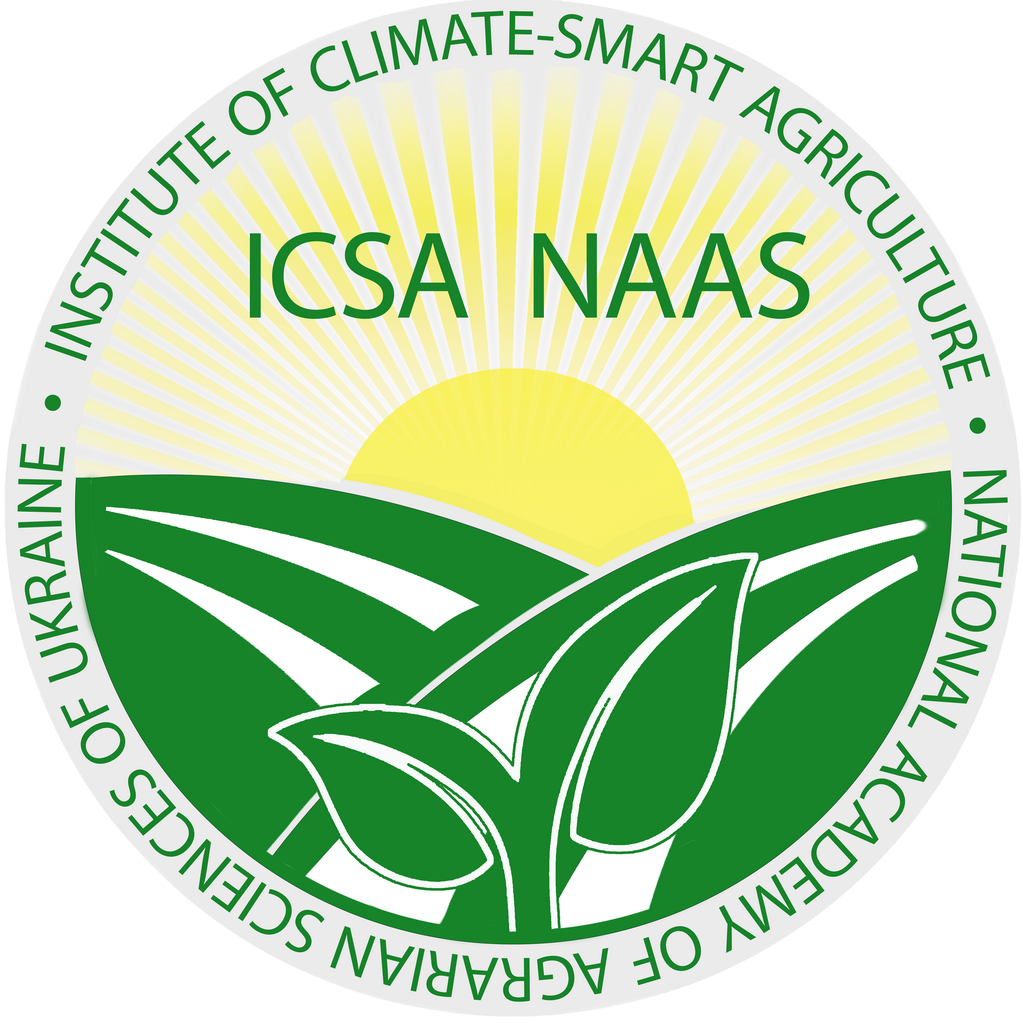Results of the study of samples of common cotton (Gossypium hirsutum L.)
Abstract
Goal. To highlight the issues of studying introducedcollection samples of cotton in the conditions of irrigationof the Southern Steppe of Ukraine for the feasibility oftheir further use in the breeding process when creatingnew varieties. Research methods – field, laboratory, statistical.Results. Over three years, 154 samples of cottonof Ukrainian and foreign selection were studied in the collectionnursery, including the first year, 8 new introduced samples from Bulgaria were studied, namely: Snezhinka,Orpheus, Tiara, Melanie, Selena, Crystal, Chirpan 539,Helius. The gene pool was assessed according to individualmorpho-biological and economic characteristics. Theshortest vegetation period was observed for Krystal andSnezhna, in which ripening occurred only 1 and 4 dayslater than the standard variety. In terms of plant height,the indicators corresponded to the “very low” level of thetrait, and in terms of the location of the lower sympodiumof 11.3 and 11.4 cm – to the “high” level. It was foundthat the studied varieties were very resistant to verticilliumwilt, homosis and lodging. As for drought, Tiara andHelius were somewhat more responsive to the dry andhot conditions of the reporting year, their resistance was7 points. Conclusions. As a result of the assessment ofthe gene pool for individual morpho-biological and economiccharacteristics, the most early-ripening varietieswere selected from the introduced samples (Krystal andSnezhna, Orpheus and Selena). In terms of plant height,Darmi, Chirpan 539 and Helius were the highest (60.4and 61.1 cm), but these indicators corresponded to the“very low” level of the trait, while the “high” level was thelocation of the lower sympodium of 11.3 and 11.4 cm inDarmi, Natalia, Vega. It was established that the formationof the yield of raw cotton is influenced by the weightof the boll and the yield of fiber. The best varieties for thistrait are Natalia (2.43 t/ha), Chirpan 539 (2.43 t/ha) andTiara (2.78 t/ha).
References
2. Hammer K., Arrowsmith N., Gladis T. Agrobiodiversity with emphasis on plant genetic resources. Natur wissens chaften. 2003. 90, № 6. P. 241–250.
3. Коваль С. Ф., Коваль В. С., Тимчук С. М., Богуславський Р. Л. Генетичні колекції: проблеми формування, збереження та використання. Цитологія і генетика. 2003. 37, № 4. С. 53 с.
4. Bellis J., Albrecht M. A., Maschinski J. et al. Advancing the science and practice of rare plant conservation with the Center for Plant Conservation Reintroduction Database. Appl Plant Sci. 2024. 12(3):e11583. doi: 10.1002/aps3.11583
5. Engels J. M. M., Thormann I. Main Challenges and Actions Needed to Improve Conservation and Sustainable Use of Our Crop Wild Relatives. Plants (Basel). 2020. 9(8):968. doi: 10.3390/plants9080968.
6. Кириченко В. В., Рябчун В. К., Богуславський Р. Л. Роль генетичних ресурсів рослин у виконанні державних програм. Генетичні ресурси рослин. 2008. № 5. С. 7–13.
7. Temesgen B., Temesgen T. Genetic Variability and Its Benefits in Crop Improvement. Middle East Journal of Agriculture Research. 2024. DOI:10.36632/mejar/2024.13.1.6.
8. Swarup S., Cargill E. J., Crosby K. et al. Genetic diversity is indispensable for plant breeding to improve crops. Crop Science. 2020. Vol. 61, Issue 2. p. 839-852. https://doi.org/10.1002/csc2.20377
9. Westwood M. N. Maintenance and storage: clonal germ plasm. Plant Breed. Rev. 1989. 7. P. 111– 128.
10. Боровик В. О., Тищенко О. Д., Кобиліна Н. О. Формування та ефективне використання генетичних ресурсів сільськогосподарських культур в Інституті землеробства Південного регіону НААН України. Зрошуване землеробство. 2010. Вип. 53. С. 421-429.
11. Barbosa P. A. M., Fritsche-Neto R., Andrade M. C. et al. Introgression of maize diversity for drought tolerance: Subtropical maize landraces as source of new positive variants. Front. Plant Sci. 2021. 12. doi: 10.3389/fpls.2021.691211
12. Akohoue F., Koch S., Lieberherr B. et al. Effectiveness of introgression of resistance loci for Gibberella ear rot from two European flint landraces into adapted elite maize (Zea mays L.). 2023. PLoS ONE 18(9): e0292095. https://doi.org/10.1371/journal.pone.0292095
13. Zhang B., Ma L., Wu B. et al. Introgression lines: Valuable resources for functional genomics research and breeding in rice (Oryza sativa L.). Front. Plant Sci. 2022, 13, 863789. doi: 10.3389/fpls.2022.863789
14. Ali J., Xu J. L., Gao Y. M. et al. Harnessing the hidden genetic diversity for improving multiple abiotic stress tolerance in rice (Oryza sativa L.). PLoS ONE. 2017. 1. e0172515. doi: 10.1371/journal.pone.0172515
15. Meseka S., Fakorede M., Ajala S. et al. Introgression of alleles from maize landraces to improve drought tolerane in an adapted germplasm. J. Crop Improv. 2013. 27. 96–112. DOI 10.1007/s10681-014-1214-1.
16. Hernandez J., Meints B., Hayes P. Introgression breeding in Barley: Perspectives and case studies. Front. Plant Sci. 2020. 11. 761. doi: 10.3389/fpls.2020.00761
17. Perpiña G., Esteras C., Gibon Y. et al. A new genomic library of melon introgression lines in a cantaloupe genetic background for dissecting desirable agronomical traits. BMC Plant Biol. 2016. 16. 154. doi: 10.1186/s12870-016-0842-0
18. Díaz A., Zarouri B., Fergany M. et al. Mapping and introgression of QTL involved in fruit shape transgressive segregation into ‘Piel de Sapo’ melon (Cucucumis melo L.). PLoS ONE. 2014. 9. e104188. doi: 10.1371/journal.pone.0104188.
19. Dwivedi S. L., Ceccarelli S., Blair M. W. et al. Landrace germplasm for improving yield and abiotic stress adaptation. Trends Plant Sci. 2016. 21. 31–42. https://doi.org/10.1016/j.tplants.2015.10.012.
20. Camacho-Villa T. C. C., Maxted N., Scholten M., Ford-Lloyd B. Defining and identifying crop landraces. Plant Genet. Res. 2005. 3. 373–384. DOI: 10.1079/PGR200591.
21. Ma C.-S., Zhang W., Peng Y. et al. Climate warming promotes pesticide resistance through expanding overwintering range of a global pest. Nat. Commun. 2021. 12. 5351. https://doi.org/10.1038/s41467-021-25505-7.
22. Raggi L., Pacicco L. C., Caproni L. et al. Analysis of landrace cultivation in Europe: A means to support in situ conservation of crop diversity. Biol. Conserv. 2022. 267. 109460. DOI: 10.1016/j.biocon.2022.109460.
23. Broccanello C., Bellin D., Dal Corso G. et al. Genetic approaches to exploit landraces for improvement of Triticum turgidum ssp. durum in the age of climate change. Front. Plant Sci. 2023. 14. 1101271. doi: 10.3389/fpls.2023.1101271.
24. Glenn K. C., Alsop B., Bell E. et al. Bringing New Plant Varieties to Market: Plant Breeding and Selection Practices Advance Beneficial Characteristics while Minimizing Unintended Changes. Crop Science. 2017. V.57, Issue 6 p. 2906-2921. https://doi.org/10.2135/cropsci2017.03.0199.
25. Волкодав В. В. Методика державного сортовипробування сільськогосподарських культур. Випуск третій (олійні, технічні, прядивні та кормові культури). Київ, 2001.
26. Методика польових і лабораторних досліджень на зрошуваних землях / Р. А. Вожегова та ін. Херсон: Вид-во Грінь Д. С., 2014. 286 с.
27. Вожегова Р. А., Рябчун В. К., Боровик В. О. та ін. Широкий уніфікований класифікатор-довідник роду Gossypium hirsutum L. Херсон, 2015. 49 с.






